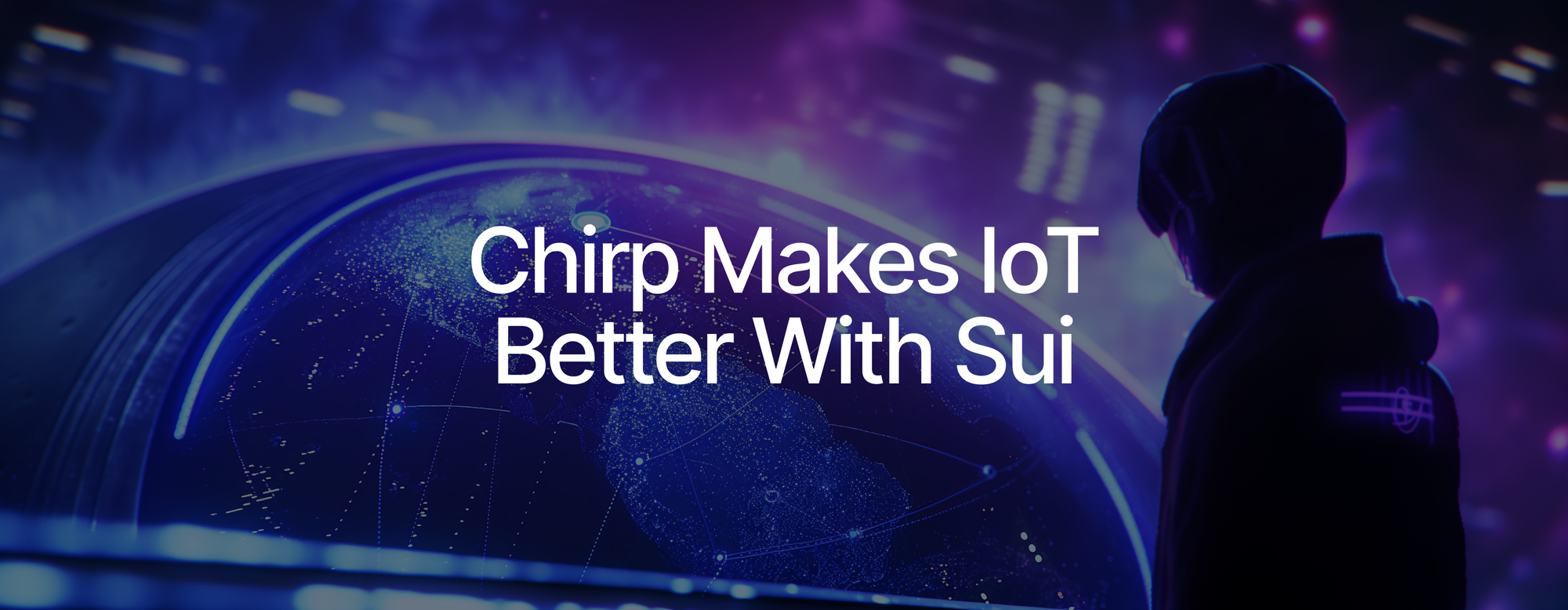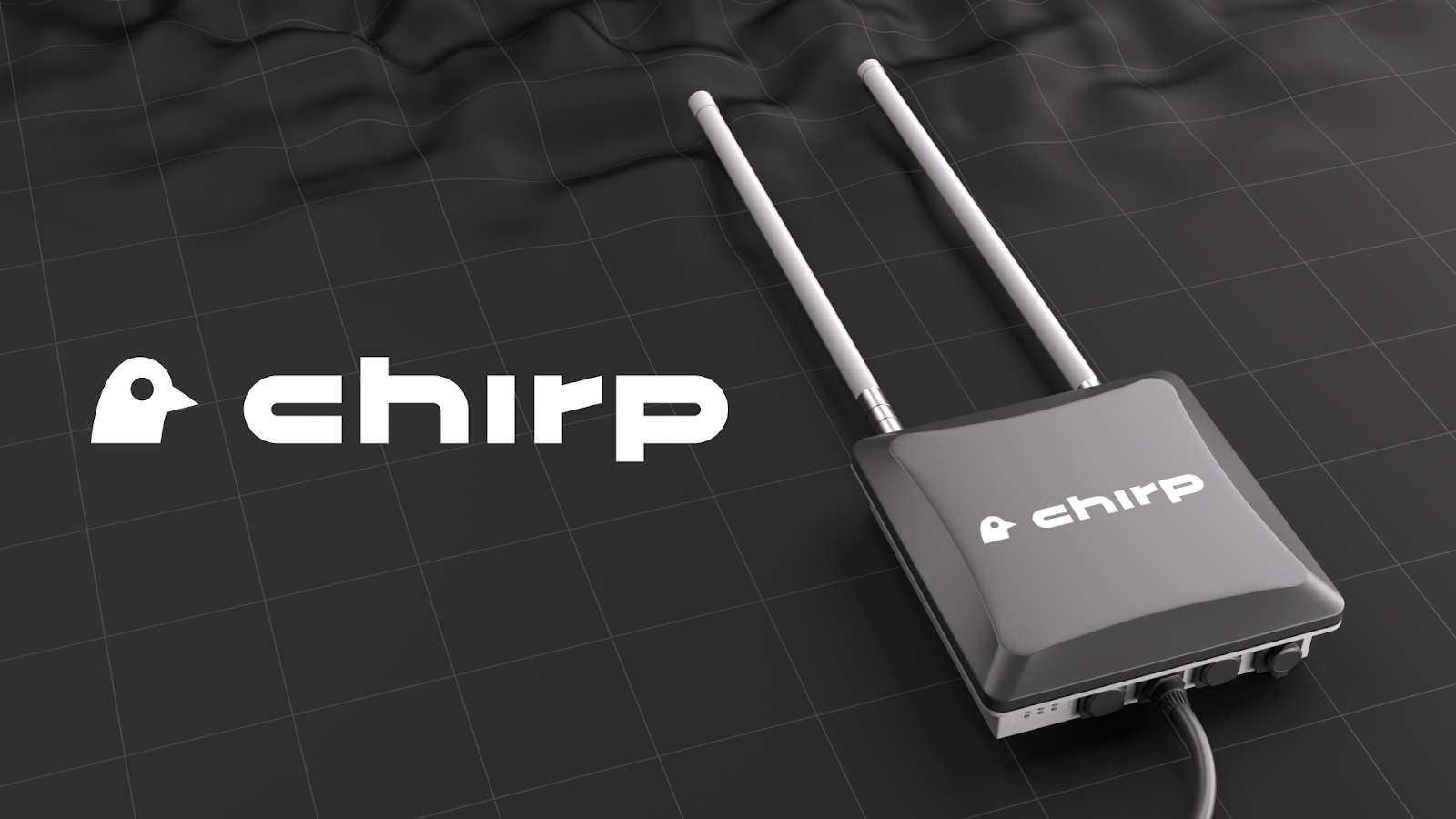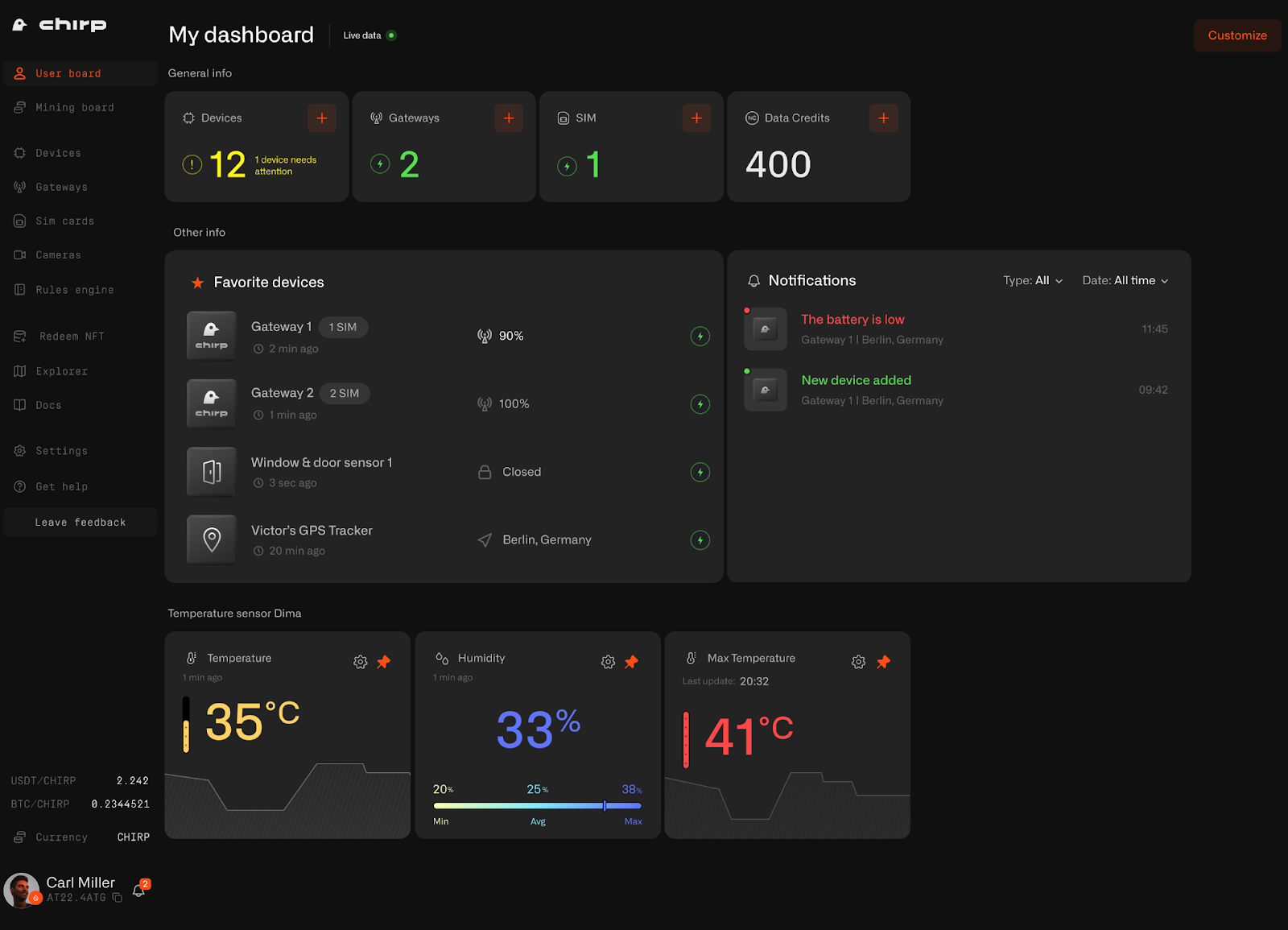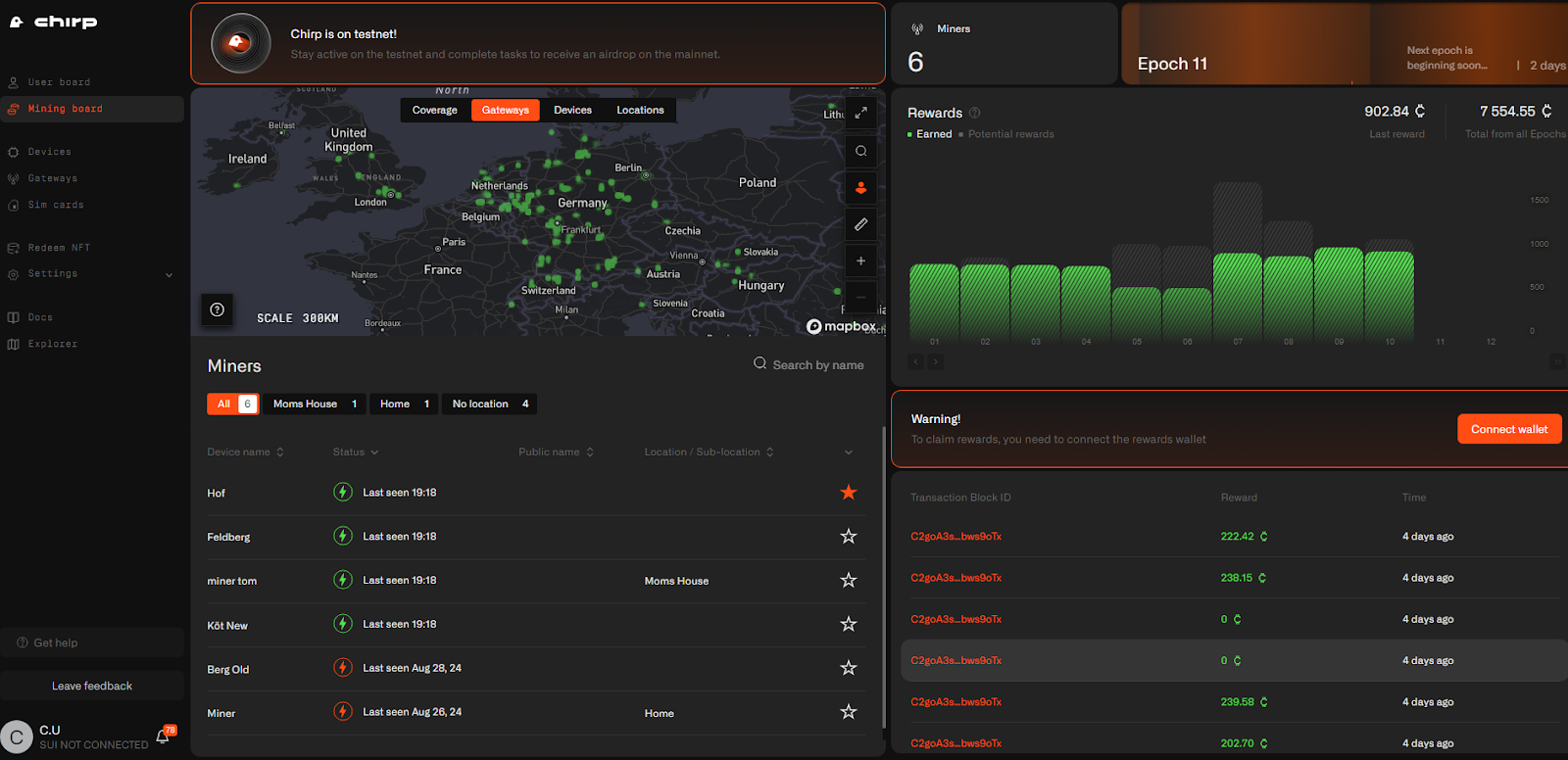Chirp Untangles the Messy World of IoT
With Chirp’s decentralized infrastructure, IoT devices from different manufacturers can finally work together, streamlining real-world applications.

Over the next decade, estimates peg the number of internet-enabled devices to grow to nearly 40 billion. Whether it’s tracking the movement of ride-sharing vehicles, improving food traceability, monitoring manufacturing facilities, or securing someone’s home, the Internet of Things (IoT) is now a critical technology for businesses and consumers alike.
But as the number of devices increases, so does their incompatibility. Silos exist between IoT devices from different manufacturers, forcing users to hop from application to application. And it becomes more challenging to use different devices in tandem to gain greater, collective value from the hardware.
Chirp has set out to solve this problem. Backed by a user-driven, decentralized physical infrastructure network (DePIN), its ecosystem works across many different radio protocols. Beyond just providing the network, Chirp also gives users access to a growing ecosystem of tools designed to help decentralized projects involved in real-world assets (RWAs) go live faster.
“We aim to simplify IoT by enabling devices from different manufacturers to communicate with each and the blockchain seamlessly, thereby connecting every IoT device under one platform," said Chirp founder and CEO Tim Kravchunovsky.
"IoT can be complex and time-consuming, which is why we provide all the tools necessary for companies to bring their applications to market faster. Essentially, the RWAs are IoT devices that need to communicate with each other and the internet, and we believe that projects shouldn't have to deal with the intricacies of IoT. Instead, they should be able to focus on delivering their use case.
“That’s why dozens of projects are already building with Chirp – from decentralized farming applications to ride-sharing, electric car charging, vehicle tracking, and property management. Chirp handles everything from connectivity to the IoT complexities so that they don’t have to.”

For Chirp to execute its vision, the company needed a blockchain partner that offered low, predictable costs, as well as fast and reliable speeds. With throughput capable of speeds up to 297,000 transactions per second, as well as consensus latency down to around 390 milliseconds, Sui provided the foundation for Chirp to pursue its goal of supporting millions to billions of IoT devices and gathering data from all the different hardware to unlock new use cases.
“When you're launching a token on the blockchain, it becomes the backbone of any project,” said Kravchunovsky. “It’s very important to select a quality partner because you’re partially putting your success in their hands.”
Community-driven
Unlike a large, centralized telecommunications company, which requires users to connect to antennas the company owns and operates, Chirp relies on a community-driven model. Users buy and install antennas that join to create Chirp’s radio-agnostic network.

There are numerous IoT connectivity technologies, each used for different purposes. Some allow devices to connect while conserving energy, while others enable the transfer of large amounts of data, such as video transmission. Unfortunately, no ecosystem enables the devices from different manufacturers to communicate with each other. Manufacturers often design their devices to work exclusively with their proprietary apps, creating an incredibly fragmented space.
"IoT is the biggest creation from the inception of the internet. Yet the space is difficult and extremely fragmented," said Kravchunovsky. "At Chirp, we aim to unite IoT and create an ecosystem that will power the future. It doesn't matter which protocol is trending; users can choose the one that works best for their RWA use case, and that’s only possible with Chirp."
RWA made easy - Dashboards, visualizations, and more
Connectivity is just the first step. The company’s suite of IoT tools helps RWA projects build apps more cost-effectively and increases the speed they can go to market. This means they don’t have to focus on sensor compatibility, but can rather focus on developing their apps. Chirp is developing the following tools for projects working on RWAs:
Connectivity: Chirp provides a community-owned radio access network to connect IoT devices. Additionally, Chirp partners with telecoms, allowing their clients to use Chirp's network, but also extending Chirp's reach.
Visualization Engine: Devices transmit data in computer code, so visualization is needed to understand what the device is sending.
Data Normalization: There is no universal standard for sensors from different manufacturers, as they often design devices to work with proprietary apps. In decentralized ride-sharing, for example, a company would either need to modify the code for each car tracker model or use Chirp's normalization engine to obtain a unified data file.
Rules Engine: Before the Chirp network, devices from different manufacturers couldn’t communicate. The project’s Rules Engine allows users or projects to create rules that trigger actions across devices or blockchains. This includes temperature sensors in supply chain management, for instance. Installed in temperature-sensitive transportation, these sensors send a command to a smart contract to release automatic payment because temperature requirements were met during the transportation.
Alerting Engine: IoT devices send data, and users need to be notified when critical events occur. In the decentralized ride-sharing example, if a car is stolen, the system can alert the responsible party, or police, and remotely disable the engine.
Blockchain Engine: Chirp is the first project to connect IoT device data with blockchain. This creates trusted, immutable data, unlocking new possibilities in supply chain management, insurance, and law enforcement, among other fields.
“All projects need to do is build an app, and we provide them with everything else. At Chirp we unite the Web2 and Web3 worlds” said Kravchunovsky.
An IoT dashboard allows users to easily connect any supported devices that can be purchased on the internet. Users can visualize the data packets transmitted by the devices, as well as normalize the data coming from all the devices of different manufacturers.

Tokenizing IoT
Chirp is in the process of minting 300 million $CHIRP tokens that it plans to release on Sui. Half of this stockpile is dedicated to network participants. Users who install an antenna are rewarded with $CHIRP tokens, which will be tradable on centralized exchanges. The company is also working on a DePIN game with real-world utility that turns smartphones into miners, letting players earn $CHIRP tokens.
A mining dashboard makes it easy for users to manage their rewards and to expand the community-owned Radio Access Network by connecting a miner to the network.

The overall strategy Chirp takes is to protect the rewards of antenna operators (aka ‘Keepers’) by issuing fewer tokens and limiting the number of miners on the network. Smart contracts will analyze the area, and when it becomes overly saturated with miners, it will be closed for further installations. This allows users to participate in other areas, effectively spreading coverage rather than accumulating it in one geographical location, which provides no benefit to clients.
“Chirp's goal is to provide carrier-grade network connectivity, so Keepers must abide by stringent installation rules. This reduces the number of miners needed, safeguards their rewards, and ensures a high quality of service for clients using the network," said Kravchunovsky.

